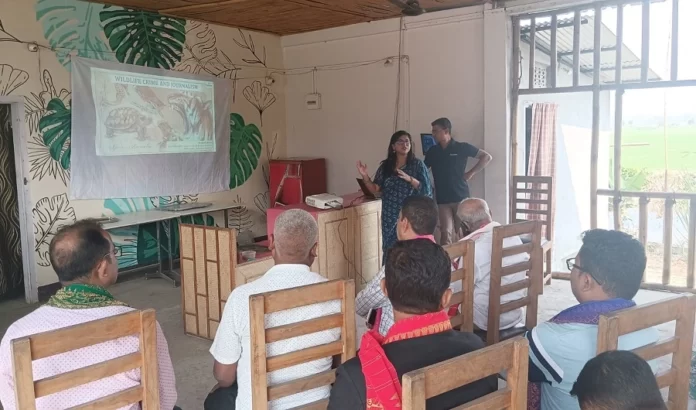Amidst escalating concerns over wildlife crime in Assam, authorities and conservationists are urging media outlets to prioritize reporting on such incidents. The call comes as part of a concerted effort to raise awareness about the threats faced by wildlife and to foster public engagement in conservation efforts.
Wildlife crime, including poaching, trafficking, and habitat destruction, poses a significant threat to the rich biodiversity of Assam. The state is home to a diverse range of flora and fauna, including endangered species such as the Indian rhinoceros, Bengal tiger, and Asian elephant. However, rampant illegal activities, driven by demand for wildlife products and habitat encroachment, have resulted in a decline in population numbers and loss of habitat for many species.
In light of these challenges, conservationists emphasize the crucial role of the media in shaping public perception and driving action to combat wildlife crime. By providing accurate and timely information about incidents of poaching, trafficking, and habitat destruction, media outlets can raise awareness about the severity of the problem and mobilize public support for conservation efforts.
Authorities have also stressed the need for media collaboration in reporting wildlife crime. By working closely with law enforcement agencies and conservation organizations, media outlets can play a vital role in exposing illegal activities, highlighting enforcement efforts, and advocating for stronger legal measures to protect wildlife.
Conservationists have applauded recent initiatives by some media outlets to shine a spotlight on wildlife crime in Assam. These efforts include investigative reports, feature stories, and documentaries that delve into the root causes of wildlife crime and highlight the importance of preserving biodiversity.
However, there is still room for improvement, with many wildlife crimes going unreported or receiving limited coverage in the media. Conservationists argue that increasing media coverage of wildlife crime can help to deter illegal activities by raising awareness about the consequences of such actions and the importance of protecting endangered species.
To address this gap, authorities are calling on media outlets to allocate more resources to reporting on wildlife crime and to prioritize such stories in their editorial agendas. They also encourage journalists to undergo training on wildlife conservation issues to enhance their understanding of the complexities surrounding wildlife crime and conservation efforts.
In addition to raising awareness, media coverage of wildlife crime can also help to hold perpetrators accountable and push for stronger enforcement of wildlife protection laws. By shining a spotlight on illegal activities and exposing those responsible, media outlets can contribute to efforts to combat wildlife crime and protect vulnerable species.
Ultimately, the success of efforts to combat wildlife crime in Assam will depend on the collective action of government agencies, conservation organizations, law enforcement authorities, and the media. By working together to raise awareness, expose illegal activities, and advocate for stronger protections, stakeholders can help to safeguard the rich biodiversity of Assam for future generations.




